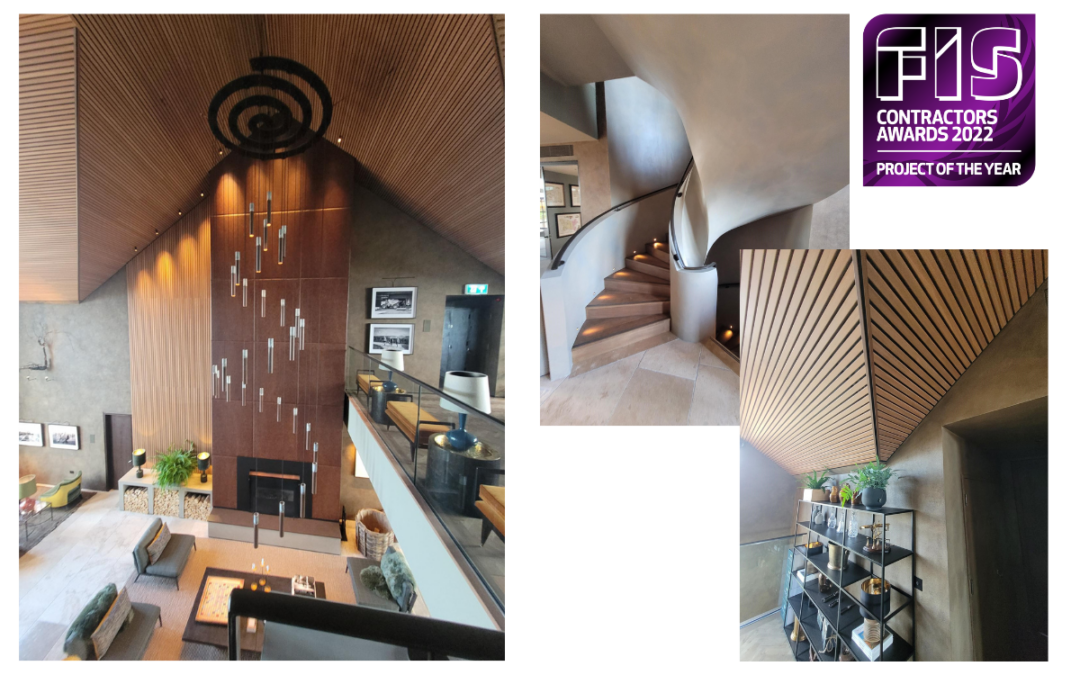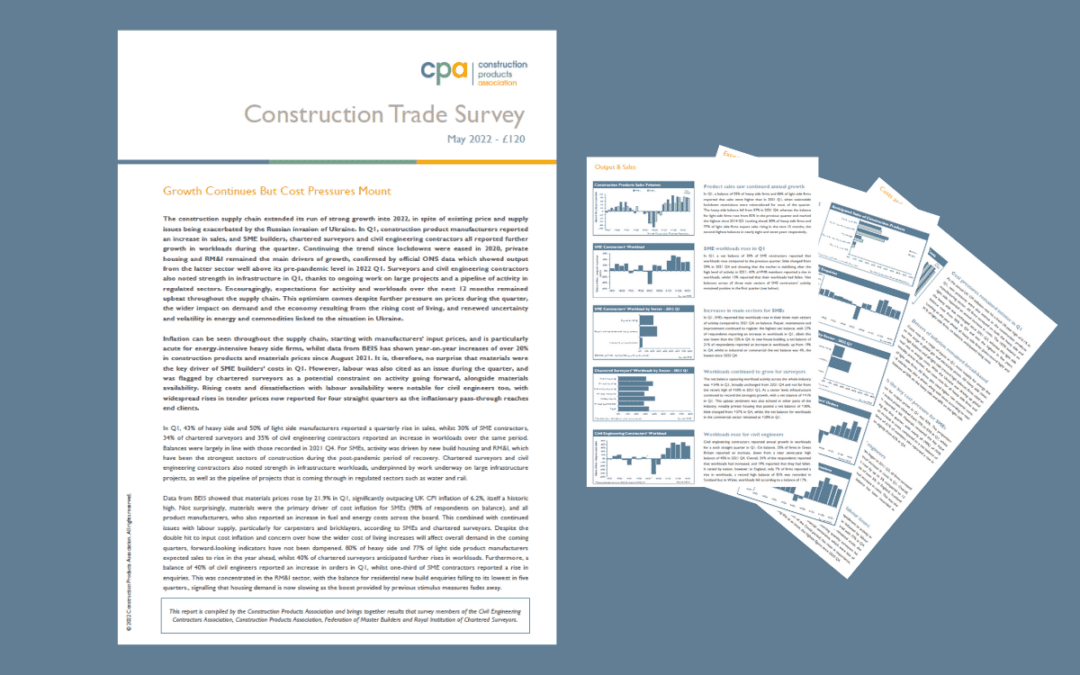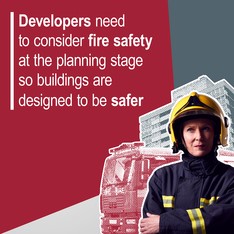
by Clair Mooney | Jun 13, 2022 | Main News Feed
FIS and NBS, the leading specification platform for the construction industry, announced this week that NBS has now formally recognised the FIS Acoustic Verification Scheme within their product selection tool NBS Source. This change means that specifiers can search for partition and operable wall systems that have been verified through the FIS Acoustic Verification Scheme (AVS), and make verified acoustic claims part of the chosen product specification.
This update to the NBS system builds on the partnership NBS and FIS announced in August 2020 that is aimed at driving up standards and compliance through information sharing and best practice amongst construction professionals.
The FIS Acoustic Verification Scheme was established to introduce standard methodology and support honest and consistent declaration of acoustic performance for partitions and operable walls. The FIS partnership with NBS means that specifiers will also clearly be able to see which products on NBS Source have AVS certification and which do not.
The FIS Acoustic Verification Scheme was created to enable manufacturers to verify acoustic airborne sound tests against an agreed criterion and a methodology to present these to market in a consistent and transparent manner. The scheme enables best practice and prevents inaccurate or misleading information from undermining the market and responsible manufacturers and suppliers.
Commenting on the latest update, Iain McIlwee, Chief Executive of FIS said:
“It is vital that we make it easy to get it right. Specifiers have a difficult role in bringing together a huge amount of information and it is easy to get it wrong. This is compounded by the use of misleading, or in some cases falsified data, that can mean clients end up paying for acoustic performance that is not achieved. By being able to bring NBS users as much information as possible at specification point is crucial in making the right building choices.”
Phil Simpson, Technical Content Manager, NBS added:
“It is initiatives like this that drew us to working with FIS, who are a real driving force within the industry and use their technical knowledge and work with their community to help drive up standards and support effective specification. Simply put the Acoustic Verification Scheme helps bring rigour and supports the specifier. In working with FIS and organisations like them we are ensuring we are including industry best practice in our content and delivering this efficiently and effectively for our specification customers, who in turn can benefit from having the right information at their fingertips.”
Details of the scheme have also been built into the NBS Chorus cloud-based specification writing platform.

by Clair Mooney | Jun 9, 2022 | Main News Feed
FIS today celebrated the finishes and interiors sector with the announcement of the winners of the FIS 2022 Contractors Awards.
Members and their guests packed out the Nine Kings Suite at the Royal Lancaster Hotel in London to watch the winners in the nine categories receive their prestigious awards.
Indepedent Awards Judges Tony Pieri and Clive Perry, who visited all project entered said:
“We don’t just judge these projects on their overall finished appearance. Other factors – including sustainability, design input, problem solving, logistics, value added initiatives and integration – are all factored into our in-depth assessment of the work involved. Members have excelled themselves in presenting to us a myriad of high quality, stunning projects. They remain a real credit to FIS and to themselves”.
A final award was given for the Project of the Year, which was judged by guest architect Robert Fry, International and
Executive Director of Aukett Swanke Group plc. Robert selected the overall Project of the Year from the winning contracts across all categories.
Robert said:
“The very high quality of the award category winners made the selection of a single project for the ‘Best of the Best’ award a very challenging proposition given the excellence demonstrated by so many varied trades and skillsets brought to bear for clients in such a collaborative endeavour”.
About the FIS Contractors Awards
The FIS Contractors Awards are held annually to encourage and promote high levels of craftsmanship and design. Not only does the FIS member who installed the contract win an award, but so does the architect or interior designer of an award-winning project.

by Clair Mooney | Jun 6, 2022 | Labour, Main News Feed, Material Shortages
Statement from John Newcomb, CEO of the Builders Merchants Federation and Peter Caplehorn, CEO of the Construction Products Association, co-chairs of the Construction Leadership Council’s Product Availability working group
Price inflation and a diminishing labour supply are now of greater concern than product availability in most construction sectors.
In terms of availability, little has changed since our last report, with a good supply of most products and materials. Ongoing challenges continue to affect bricks, aircrete blocks, roof tiles, chipboard flooring, gas boilers and other products requiring semi-conductors within sub-components, all of which will be subject to longer lead times throughout the year.
The market is becoming more adept at managing supply of these critical products, and the long-term nature of some of the underlying issues. Although there are reports of delays in supply of boilers leading to extended completion times in new housing, new semi-conductor capacity is coming on stream in late 2023/2024, and expansion in existing capacity will feed into the market over the same timescale.
Demand remains strong in all areas, and this is set to continue into the autumn, although some product forecasts now anticipate a slight slowdown in housing starts towards the end of the year, stemming from rising prices and concerns about affordability. Home improvement work will depend on levels of consumer confidence as costs of living rise.
Members of the group raised concerns regarding the threatened rail strike. This will affect aggregate and concrete deliveries to major infrastructure products, highlighting the need for government to prioritise transport of construction materials should the strike go ahead.
There is, however, some good news from parts of China. With Shanghai gradually removing covid restrictions, production should normalise in that major industrial region by mid-June. Shipping analysts warn, however, that this may exacerbate the current bottlenecks in deliveries to the West.
Across the board, managing price volatility and labour are now the biggest issues.
Although labour shortages are affecting manufacturers, the greatest concern is expressed by housebuilders and SME builders, as it takes at least three years to train a skilled tradesperson.
The cost of energy and fuel are major drivers for price volatility. Initial results of the Group’s horizon scanning exercise suggest energy hedges are short term and very significant increases are expected to come through quite quickly. This will particularly affect energy-intensive products including steel, glass, plasterboard, cement, ceramics and porcelain.
Although steel prices have come down slightly, since initial disruption following the outbreak of war in Ukraine, energy prices remain a major issue and price volatility will continue. Market prices will also be affected by the Indian Government’s unexpected increase to export duties on iron ore and steel, effective from 22 May.
The CLC group will continue to actively engage with energy intensive manufacturers over the coming months, and closely monitor market conditions and the impact of any further price increases and volatility.

by Clair Mooney | May 31, 2022 | Main News Feed
The construction supply chain extended its run of strong growth into 2022, in spite of existing price and supply issues being exacerbated by the Russian invasion of Ukraine. In Q1, construction product manufacturers reported an increase in sales, and SME builders, chartered surveyors and civil engineering contractors all reported further growth in workloads during the quarter. Continuing the trend since lockdowns were eased in 2020, private housing and RM&I remained the main drivers of growth, confirmed by official ONS data which showed output from the latter sector well above its pre-pandemic level in 2022 Q1.
Encouragingly, expectations for activity and workloads over the next 12 months remained upbeat throughout the supply chain. This optimism comes despite further pressure on prices during the quarter, the wider impact on demand and the economy resulting from the rising cost of living, and renewed uncertainty and volatility in energy and commodities linked to the situation in Ukraine
The CPA’s Construction Trade Survey brings together results from surveys of building contractors, specialist contractors, civil contractors and product manufacturers. It provides a pan-industry assessment of current and expected conditions.

by Iain McIlwee | May 30, 2022 | Main News Feed
Approved documents supporting compliance with the Building Regulations refers to an FD20 Fire Doorset in certain circumstances. This is no longer a commonly tested option with many manufacturers no longer testing to this standard and certification companies not offering 3rd party accreditation for FD20 products. In January this year, The Building Control Alliance took the decision to withdraw Technical Guidance Note 9 – Fire Doors in Dwellings in January 2022. This document set down a deemed to satisfy option that supported the determination of an FD20 based on the following descriptor:
It is still common for an FD30 fire rated door leaf to be installed in a site made frame without the installation of intumescent seals. Whilst this practice may not be directly supported by an appropriate fire test or independent certification, this method of installation has been widely accepted by building control (without objection from DCLG) as providing a sufficient level of protection to escape routes within dwellings.
NHBC has this month published, Technical Guidance note 6.7/19 – FD20 Fire doors (England and Wales) to clarify the situation with FD20 doors. The Guidance asserts:
Where a fire door is required by the building regulations, this includes the complete door assembly, whether assembled on site or delivered as a completed assembly, consisting of the door frame, leaf or leaves, essential hardware, edge seals and glazing, and any integral side panels. Together these components form the fire door, defined as a ‘fire doorset’ within the approved documents England.
Where the building regulations requires a minimum of a FD20 fire doorset and these are not available to purchase, a fire doorset capable of exceeding the minimum requirement should be selected, typically a FD30 fire doorset.
Where a FD30 fire doorset is purchased to meet a building regulation requirement to provide a FD20 fire doorset, the FD30 fire doorset must be installed in strict accordance with the manufacturers guidance to achieve the FD30 fire doorset performance, in order to ensure the minimum FD20 requirement is met.
From the 1st July 2022 NHBC will only accept fire doorsets which meet the requirements of the building regulations. Separate door frames and doors which have not been tested together will not be acceptable.
The full Technical Guidance Note is available to view on the NHBC Website here.

by Iain McIlwee | May 27, 2022 | Building Safety Act, Main News Feed
If you’ve had a go at reading the Building Safety Act, well done!! It was described to me this week as a Lawyers Paradise, it is a complex document that cross references a myriad of different Acts and Secondary Regulation and particularly the latter is yet to be fully written. We’ve even seen the documents like The Building (Higher-Risk Buildings) (England) Regulations 2022 (which included the provisions for how the Gateways are to be set out) temporarily withdrawn because they developed alongside the passage of the Building Safety Bill, but now don’t reflect the final Act, due to the number of amendments that the Government agreed to.
I spoke to the Regulator (HSE) at a Giri event this week and we talked about timings of the Gateways, the official timeline is looking at October 23 for the introduction of Gateway 2 and 3, but she went on to emphasise the gateways are about proving to the regulator you are compliant. But, the Act is in force now and ultimately the question we need to answer is “am I certain this building meets the functional requirements of the building regulations when it comes to structural and fire safety and will do for the next 15 years”. The Gateways are hard stop points that reassures the regulator that “construction won’t start until….” and “occupation will not happen until….” respectively. There is a lot of detail in “until”, but at it simplest it is “Construction won’t start until we know what we are about to build is designed to be safe and we have effective controls in place to ensure design is achieved” and “Occupation won’t happen until you can convince the Building Inspector that that is what you did”. They are also about information management to ensure that the buildings can be managed safely – we need to start thinking of the O&M Manual as something that is alive in the building than hidden in a drawer.
We’ve been exploring this all with members and colleagues across the wider construction sector, what it could mean in terms of timings and the order of things and when we need to be ready to work on the consultations around secondary regulations. One thing that has definitely been missed by some is that it is not just about residential work it is about working on buildings that are deemed higher risk. A lot falls into scope based on the premise that if the building is greater than 18m and has more than 2 dwellings in it, the entire building is in scope. So if you are working on a commercial building with a couple of penthouse flats on top, it is in scope (regardless of the fact your work may not touch those residential properties). The best guidance I have read so far is contained in the Guidance on Collaborative Procurement (link below), this includes some useful Q&A’s. We are working on our own core guidance and will be fleshing this out over the coming weeks, but if you have any questions don’t hesitate to get in touch and we’ll do our best to unpick things for you.
As an indication of where the problems might be, we can look to the lessons from Gateway 1, where HSE has raised fire safety concerns on planning applications for more than half of the higher risk buildings for which applications were made under the planning gateway one process. Whilst sadly much of this will be genuine areas of concern, others will be undoubtedly be fraggles in the process.
I remain convinced that the new Gateways are a force for good, they make single stage procurement processes less attractive and put the right emphasis on design development, pre-construction and change control as well as competence and planning, but there will inevitably be some pain in this and we do recommend you start looking out for any clauses that push the cost of delay into the supply chain where there is limited ability to control – remember this is start/stop do a failure to comply could leave e.g. a 12 week hole in a programme. FIS is picking this up with our legal advisors.
Department for Levelling Up, Housing and Communities Guidance on Collaborative Procurement
FIS high level summary of the Building Safety Act and what we know so far






